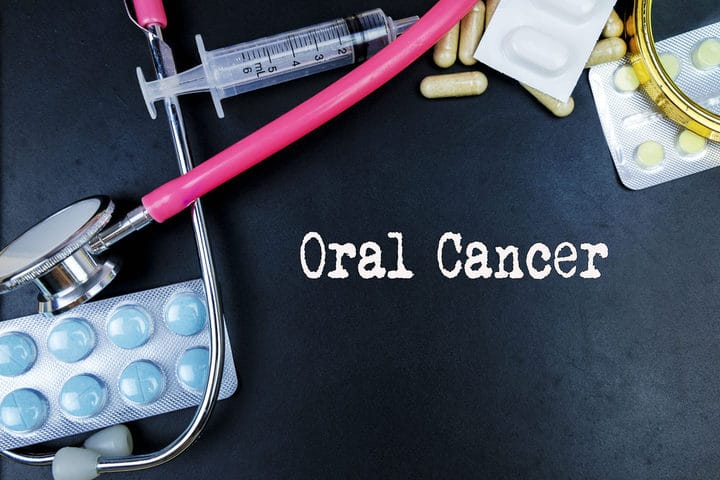
During your regular professional check-up and cleaning, your dentist will also thoroughly examine your oral soft tissues.
Regular oral examination of the entire mouth is essential in the early detection of cancerous and pre-cancerous oral conditions.
You may have a white patch, ulcer or lump that you are unaware of that needs more thorough investigation.
Most are harmless but those that are not can be very dangerous and it is best to refer anything concerning to make sure that the appropriate treatment is accessed as quickly as possible if needed.
Painful ulcers in the mouth are very common and usually of no cause for concern.
Ulcers that are not painful and do not heal within a very short period of time require further investigation especially at some sites like the side of the tongue or the floor of the mouth.
While oral cancers are most often discovered in people over the age of 40, these cancers are now occurring more frequently at a younger age.
Historically more men than women were affected, at the rate of 6:1, but that ratio has reduced to 2:1, most probably due to lifestyle choices.
The human papilloma virus, particularly version 16, (HPV16) is conclusively implicated in the increasing incidence of young non-smoking oral cancer patients.
Research is suggesting that in people under the age of 50, HPV16 may be replacing tobacco as the primary causative agent in the initiation of the disease process.
Prevention and detection
The best way to prevent oral cancer is to avoid tobacco (both cigarette and chewing tobacco).
Tobacco use together with alcohol has been shown to greatly increase the risk of oral cancer.
It is unclear whether vaping is also linked to increased risk, but some early studies are suggesting that it is.
Because there are so many benign tissue changes that occur normally in your mouth, and some of these changes may mimic the look of a dangerous tissue change, it is important to have any ulcer or discoloured area of your mouth, which does not heal within 14 days, looked at by a professional.
You should know
- Oral cancer often starts as an ulcer on the floor of the mouth, side of the tongue or on the lips. You may not notice it, or if you do, it may seem inconsequential.
- It is also worth noting that the lips are a not uncommon, but often overlooked, site for non-melanoma skin cancers. The lower lip is much more likely to be affected due to more sun exposure.
Other signs include:
- A sore that bleeds easily or does not heal
- A colour change of the oral tissues
- A lump, thickening, rough spot, crust or small eroded area in the mouth
- Pain, tenderness, or numbness anywhere in the mouth or on the lips
- Pain or difficulty chewing, swallowing, speaking or moving the jaw or tongue
- A lump or mass which can be felt inside the mouth or neck
- Hoarseness which lasts for a long time
- Any numbness in the oral/facial region
- A change in the way the teeth fit together
Oral cancers can occur in people who do not smoke and have no other known risk factors.
Studies suggest that a diet high in fruits and vegetables may prevent the development of potentially cancerous lesions. And of course … this is another reason to see your dentist regularly for a check-up.
Check out our previous post Oral Cancer – Another Reason to Have Regular Check Ups for more information on this subject.
